
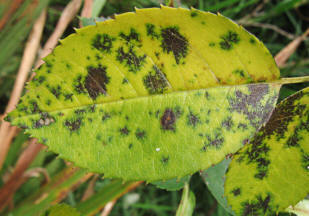
Rose Black Spot
Plant diseases are not insects, though they can sometimes be caused and spread by insect activity.
Diseases normally consist of one of a group of three wide-ranging organisms. Fungi, Bacteria or Viruses! Some of these are invisible unless under a microscope, but the affects of the infection are soon to be seen.
Most plant diseases are either difficult or impossible to 'cure'! This fact above all else makes the prevention of diseases the more important.
The main diseases that attack plants are those caused by various fungi. Many fungi are harmless or even beneficial in the garden, but there are several fungus types that can cause diseases ranging from wilt to basic rots or just potentially lethal leaf discolorations.
One of the most common problems on specific plants is that of Rose Black Spot - a fungus. It is different, though similar to the Black Spot that materialises on Acers. However, the treatment is broadly similar.
Plant diseases are very difficult to positively identify, as there are many diseases that cause the same symptoms - as in the Rose and Acer black spot diseases. The good news is, that most 'similar' diseases can be treated in general terms. Absolute positive identification is not always necessary - unless of course you are rather deep into plant pathology! Theses pages are not for you!
'Damping off' of seedlings in the seed tray is caused by several different fungal pathogens. They can all be thwarted with the same good husbandry, or controlled with the same broad spectrum fungicides. There are only a handful of worthwhile fungicides on the market. A collection of two or three will normally deal with any fungal infection you are pestered with. Of that, more later.
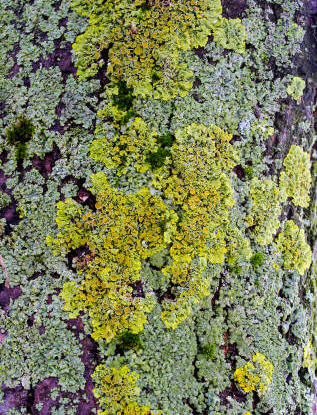
Lichen in the Garden
Lichen is a complex organism, sometimes referred to as a fungus; sometimes algae; sometimes moss. Two of those descriptions are nearly right for lichen is a combination of two separate and unrelated forms of ‘plant’ life - being part algae and part fungus. The two parts combine together to make up the organism that we refer to as lichen.

Clematis Wilt
Most varieties of Clematis are known to suffer from Clematis Wilt. It is usually a fatal disease of Clematis. However, there are several precautions that can be taken to make sure that you clematis has the best chance of survival and also steps you can take to prevent Clematis Wilt.

Bark Canker
Some apple trees are susceptible to infection by canker – rough lumpy areas on the trunk or branches. Cox’s Orange Pippin is one of many trees that seem to get infected with this disease.
It is caused by a fungal spore entering the bark. The first signs are usually leafless twigs or twigs with small shrivelled leaves.

Raspberry Cane Blight
The spores of the fungus -Leptosphaeria coniothyrium - normally enter the cane at damages points. The damage need not be extensive for entry to take place - slight bruising of the stem seems to allow entry to the Raspberry Cane blight. Pruning - essential in raspberry fruit production, is sometimes the entry point for the fungal spores.
The fungus spores can also enter healthy stem tissue. With badly affected outbreaks, there have been no significant sign of raspberry midge damage, so the boring by this and other 'borers' can be largely discounted as a means of the disease spreading or taking hold!
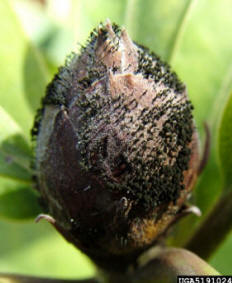
Rhododendron Bud Blast
Rhododendron bud Blast is a fungal disease of Rhododendrons and Azaleas, affecting the tight dormant flower buds. The disease if more noticeable in the spring, when buds will be dark brown and normally covered in small black hair-like growths of the fungus disease. It causes brown buds to form on the plants of either Rhododendrons or Azaleas. The brown flower buds do not open.

Blackspot on Roses
Whilst there are some Rose varieties that are very susceptible to Blackspot, Black Spot. This disease (fungus) it can attack most varieties given the right conditions.
Ironically, clean air allows the disease to take hold, whereas the old industrial atmospheres which were generally loaded with sulphur, controlled Rose Blackspot to a large degree! South West UK and S Wales are said to be the worst areas for this disease.
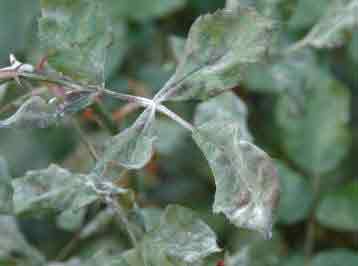
Powdery Mildew Disease
Powdery mildew is one of the most common of the fungal diseases, attacking a wide range of plants which include vegetables, shrubs, perennials and annual bedding plants. It is also one of the easiest diseases to spot and positively identify. “White powdery spots on plant leaves” will do nicely. I get many emails with that description every year.
In the early stages, powdery mildew may show up on leaf surfaces as small pale green spots, which soon change to the white powdery deposits giving it its common name of powdery mildew.

Mildew on Roses
The mildew that normally affects roses, is a form of powdery mildew. There is also a more serious - but rarer for of mildew (Downy Mildew) which this article is not concerned with. The white powdery mildew mould start off on the leaves and soon spreads to buds and other young rose shoots.
The affected foliage curls up and eventually falls off if not treated. Flower buds may not open properly, and if they do, will be severely affected. As distinct from Blackspot, Rose mildew is prevalent in dry hot conditions - in particular when the root area is dry and lacking moisture.

Rose Sickness
Rose sickness is rarely described or explained properly, for in some cases it happens, and in other cases it doesn't! Until quite recently there was some scepticism as to whether Rose Sickness actually existed.
Generally, where a rose has been removed - for whatever reason - and a new one put in its place, the new rose either does not perform well - or in some cases never properly establishes and dies.
Sooty Mould
One of the most commonly asked questions in our mailbox is about 'black stuff on leaves'. This is normally caused by the the Sooty Mould Fungus (Cladiosporium).
Sooty Mould normally requires an even further down the problems chain in order to make an appearance. For in itself, it does not normally invade plant live - or dead - plant tissue.
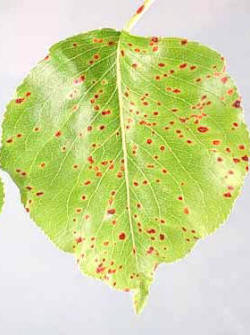
Pear Rust
Pear Tree Rust Disease - a Fungus growth - can affect both Pear tree leaves and also those of the Juniper family.
It is easily identified, though has to be 'looked for' during the initial stages of infection, and is normally visible in late July - but then decidedly more active in the months from August through late September.
The normal leaf spotting that occurs with the onset of leaf drop in the autumn should not be confused with Pear Leaf Rust Disease.

Rust Spots on Leaves
Rusts on plants are caused many different types of fungus infections. All plant leaf rusts are fungal growths and as such can be treated or even prevented in several different ways. Most plant rusts are specific to a particular type or family of plants. For instance, the rust that affects bedding geraniums - Pelargoniums - is different to that which affects Antirrhinums.
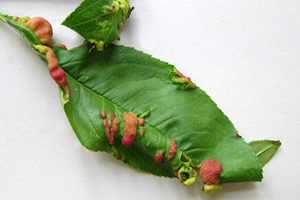
Peach leaf curl
Leaf curl is a general term for the curling of plant leaves, caused by pest, disease or chemical means. Peach leaf curl is a very common example - with peach leaves becoming curled and distorted due to fungal disease or sometimes pest attacks. In this case, prevention is always better than 'trying to' cure! Spraying with a copper fungicide prior to leaf break helps.
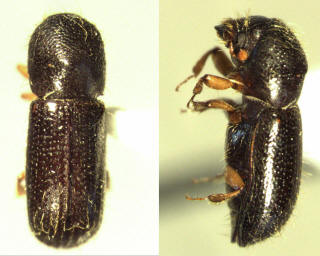
The Bark Beetle
Within the pest listing range, you will find some of the most common insect pest that affect many garden plants, including of course, the wide range of Aphids and other sap sucking insects.
Correct identification of your garden pest is very important before you start treating. Far better of course, to be aware of the pests that are prevalent in given seasons in order to use preventative methods before an infestation.
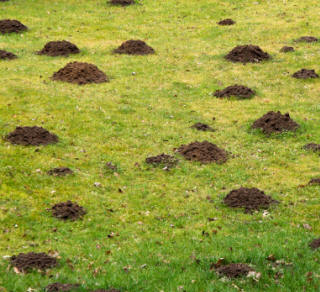
Moles in the Gardens
Mealybugs and Red Spider mites top the list of garden enemies, and also for the indoor plants - house and greenhouse. Some of the fruit enemies are in this A - S listing - especially for Strawberries and Raspberries.
In the ornamental garden, the Rhododendrons find a few enemies on this page, or should we say that the enemies find the Rhododendrons?

Vine Weevil Beetle
T - Z with garden pests will include one of the most difficult pests to get under control - Whitefly! Together with that, the larvae of the Vine weevil Beetle will play havoc with your plant's root system - often resulting in death with smaller plants. Observation of your plants on a regular basis may well alert you to what is happening underground - especially with the tell-tale leaf damage which is the hall mark of Vine Weevil Beetles.